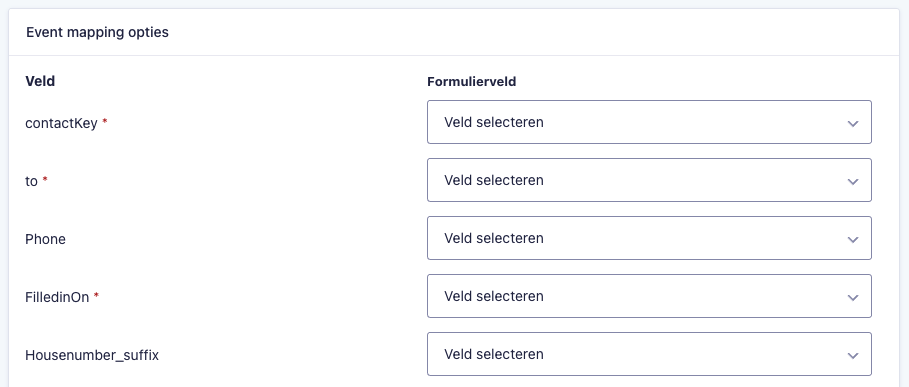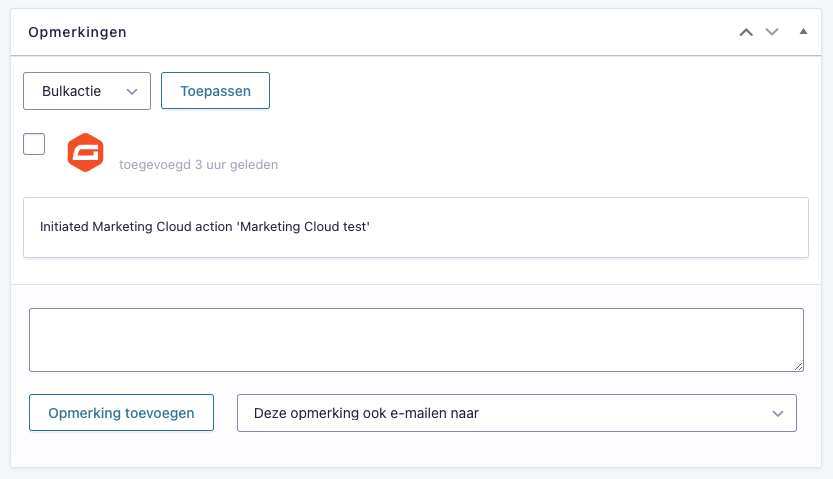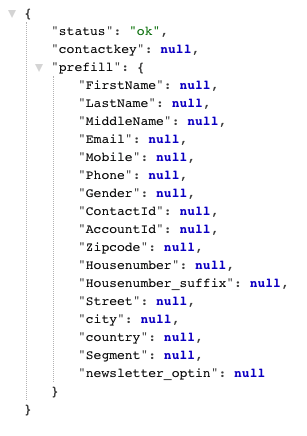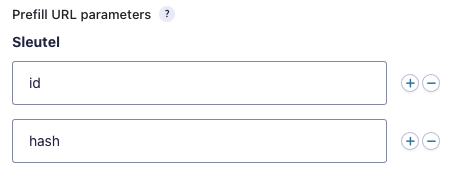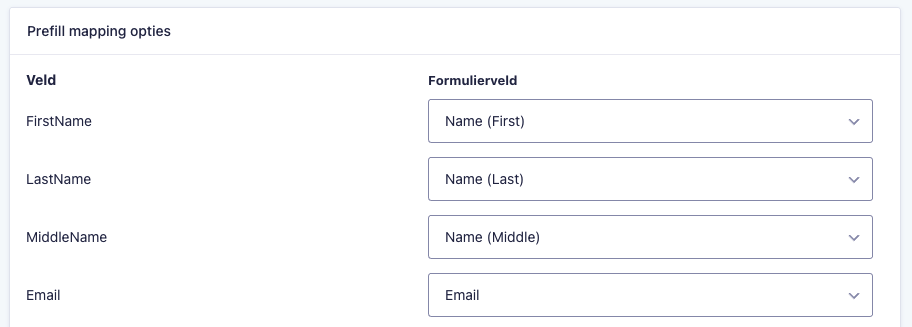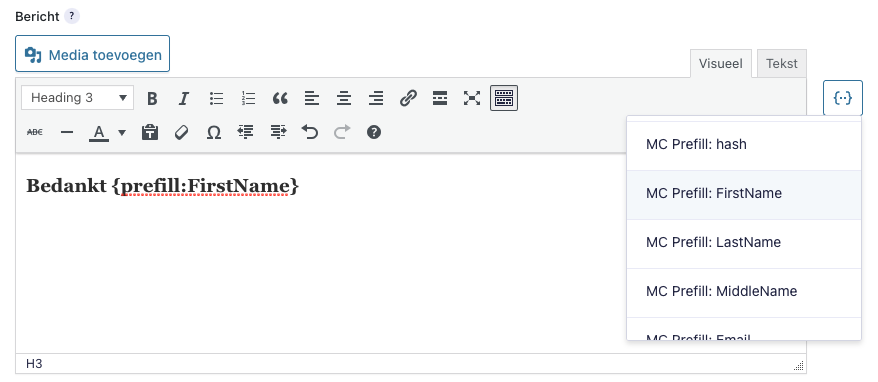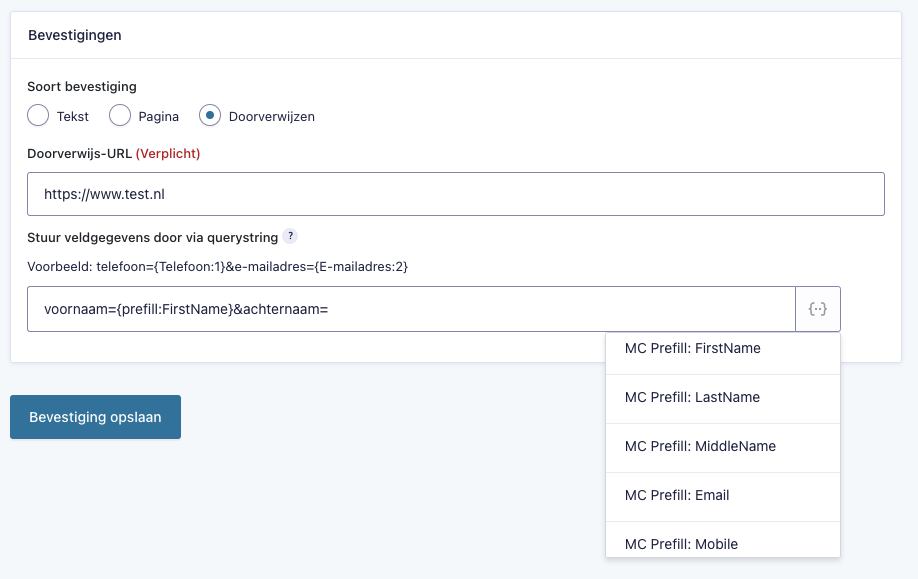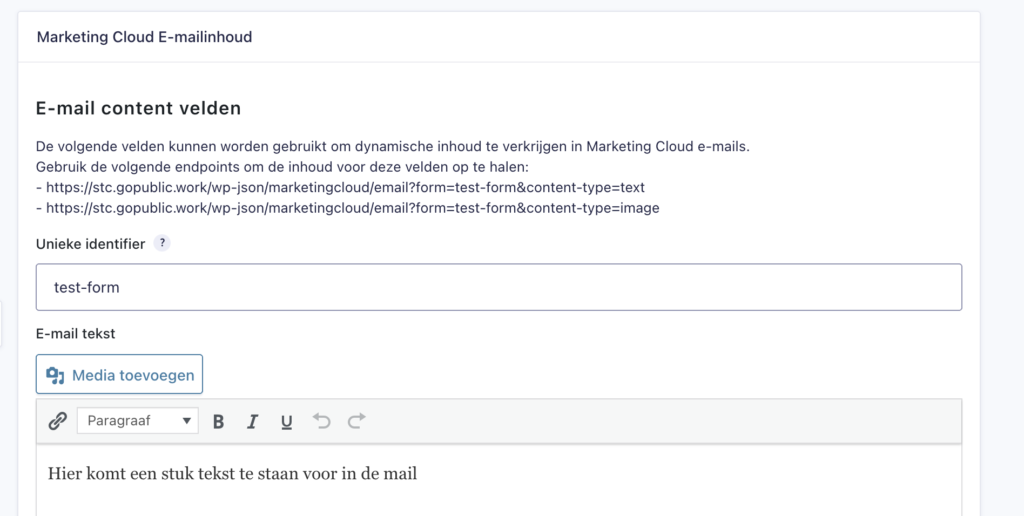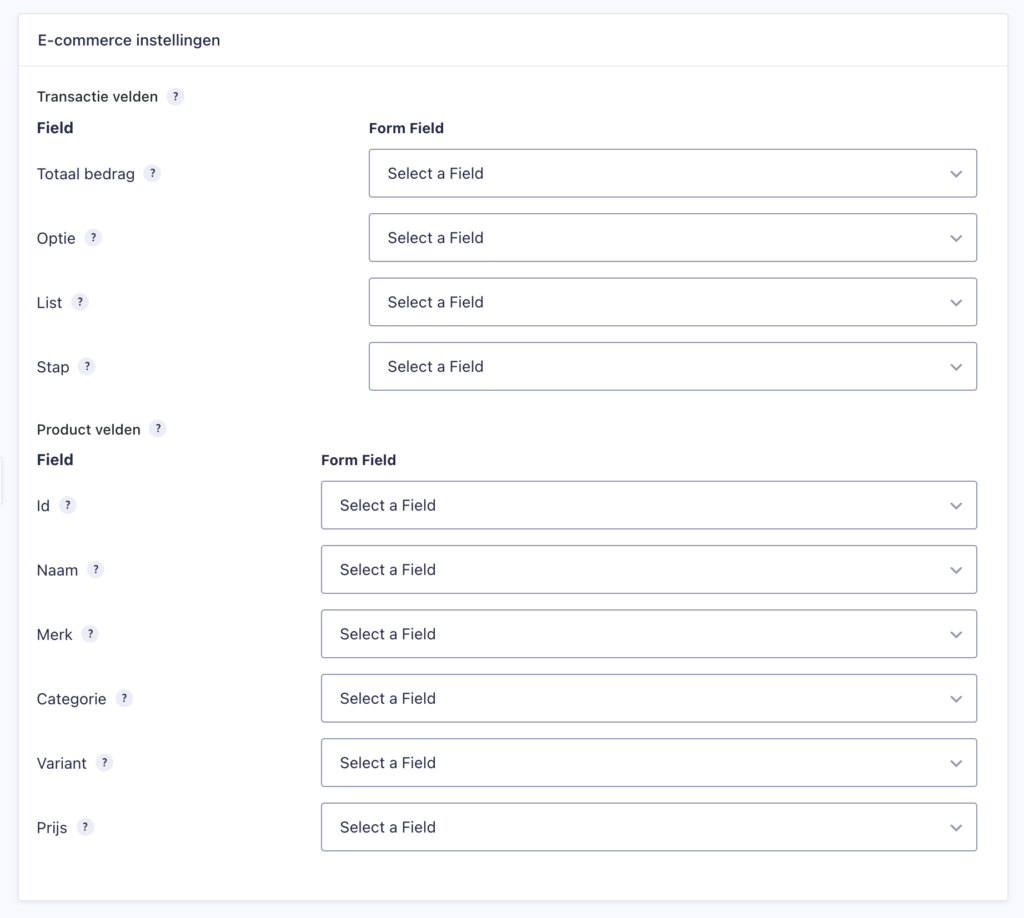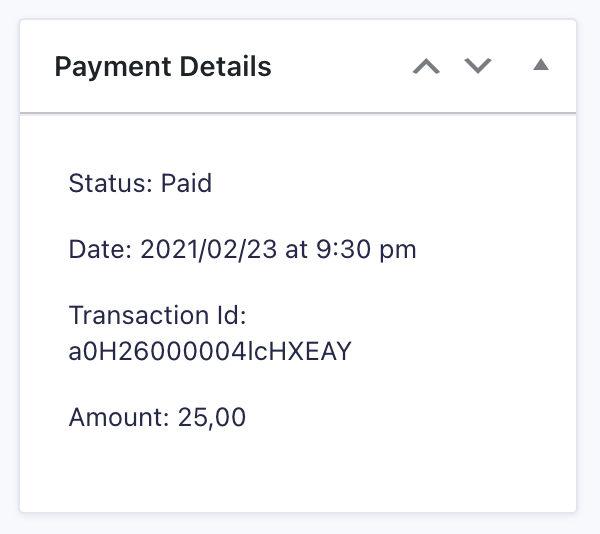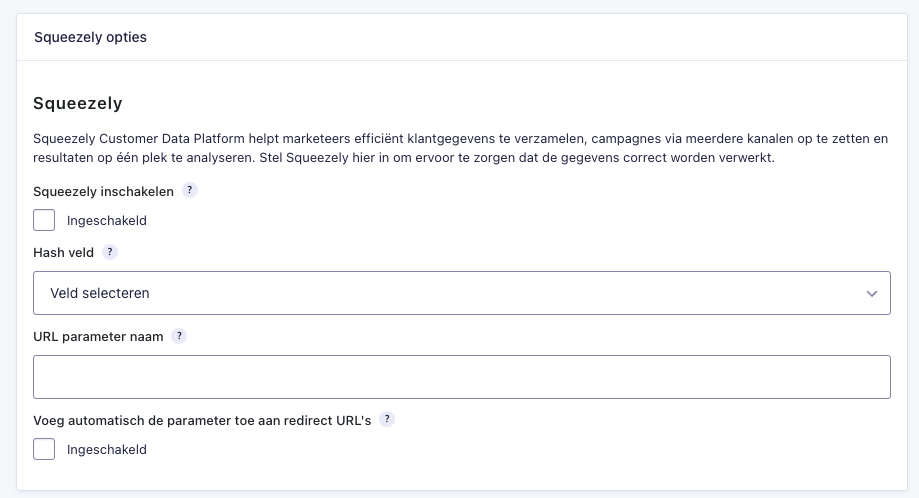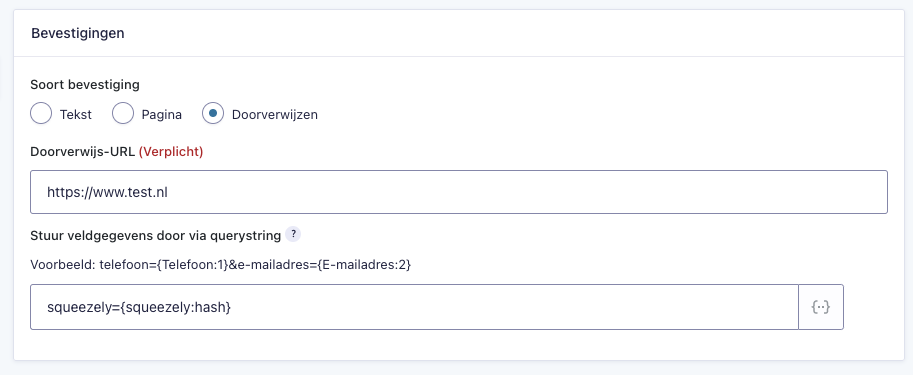Edit a form
Articles
CampaignSuite fields
Conditional logic
Zipcode checker
Mask input
Prefill HTML and textarea
Hide prefilled fields
Form settings
Notifications
Salesforce
Articles
Connect to Salesforce
Payment fields
Converse
Findock v1 and v2
Plauti Duplicate check
Synchronisation fields
Salesforce objecten
Prefilling based on ContactID
Mautic
Articles
Connect fields
Pardot
Articles
Pardot form
Pardot Form Handler
Marketing Cloud
Articles
Marketing Cloud feed actions
Prefilling fields
Dynamic content in emails
Gutenberg Dynamic Content
If a connection with Marketing Cloud has been set up, it is also possible to place Dynamic Content from a Marketing Cloud Page on a page in the website. This is done using a wrapper block called Dynamic Content Wrapper.
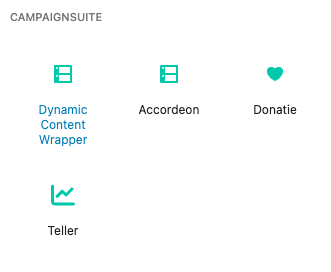
This block has different settings in the right column:
Code type
Dynamic content must always be retrieved based on a campaign code. This value can be sent to Marketing Cloud in several ways:
Page field
The code will be retrieved from the Campaign Code field below the block CampaignSuite page settings
Custom
The code can be entered manually on the Dynamic Content Wrapper block.
Make campaign code dynamic
It is also possible to extract the code from the URL of the page. Check this option and enter the parameter name from the URL containing the campaign code.
Content type
There are currently 3 content types available for dynamic content:
Form page
This is content that can often be found on a campaign page.
Thank you page
This is content that can be displayed on the thank you page after a donation
Next best action
This is content that can be used for possible next best actions from a donor.
Show advanced settings
Under advanced settings it is possible to set a custom endpoint. This endpoint will then overrule the default endpoint in CampaignSuite settings.
It is also possible to choose whether this dynamic block should be rendered Client side or Server side.
Client side
By default, the texts are and images loaded into a Dynamic Content Wrapper via javascript. To ensure that the visitor does not see a jump in the content, the entire content of the page will first be hidden. As soon as all dynamic content has been loaded, the page will become visible.
Server side
With this option, the server will first make a call to Marketing Cloud to fetch the dynamic content. Then all content will be replaced in the blocks. Eventually the complete page will be loaded.
The main difference between Server and Client side is the fact that with Server side the page ‘keeps loading’ until all content has been replaced. At the Client side, the page has finished loading and the visitor will see a white page for a short time (maximum 1 second). Also, cache plugins can prevent Server side pages from being populated dynamically.
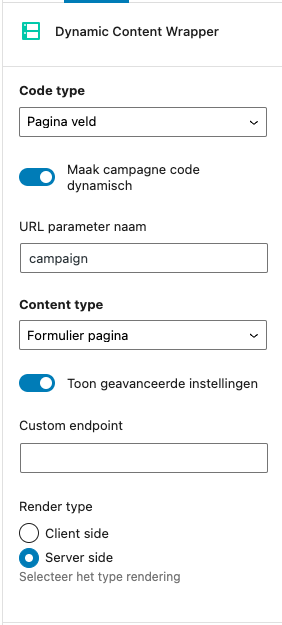
Elements with dynamic content
The following Gutenberg blocks within a wrapper can contain dynamic content:
– Header
– Paragraph
– Image
– Cover image
– Button
As soon as one of the above fields is placed in a Dynamic Content Wrapper block, the following option appears in the right column:

Check this option to specify that the content of the original block should be replaced with content from Marketing Cloud. If no dynamic content can be retrieved from Marketing Cloud, the original content will remain intact.
Feed actions
CS E-commerce
Entries
Squeezely
Measurement
CampaignSuite contains a very extensive system for setting measurements on forms. Think for example of Client Side and Server Side events at certain moments in a form. These moments can be, for example, when you switch pages in a form or when a successful payment has taken place.
There are a total of 6 moments when you can determine that something needs to be measured by one of the four providers (Facebook, Google Analytics 4, Squeezely or Google Tag Manager). It is possible to create multiple actions per form.
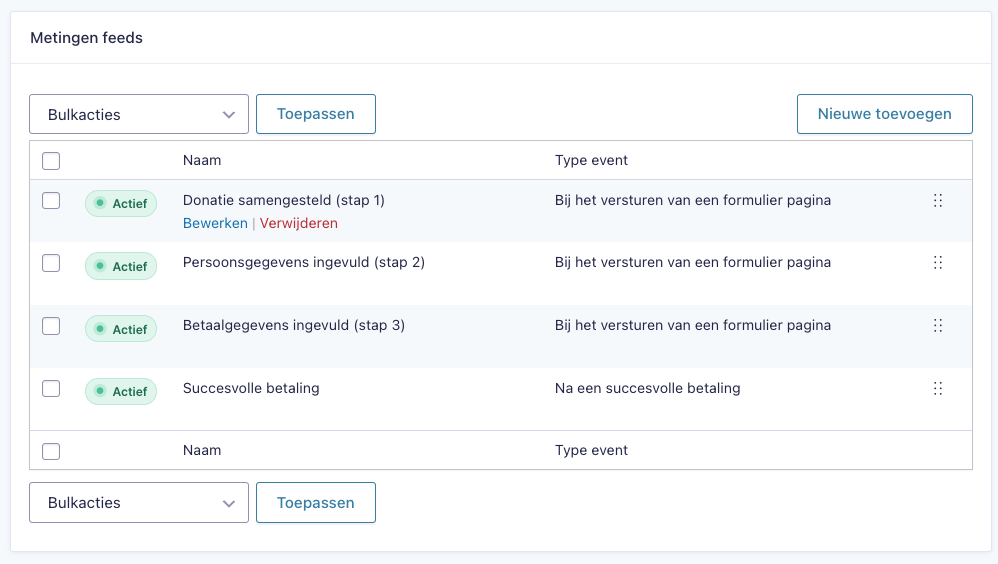
Check out the articles below to learn more about measurement options.
Create new measurement
To create a new measurement moment, open a form in WordPress and go to Settings -> Measurements. Then click the Add new button.
This will open a new window with the following options:

Action name
Enter a recognizable name within the system here. This name will not be displayed on the website or in a measurement value.
Type of event
Choose here from one of the six moments at which the measurement should take place. An event can make a Client Side call, a Server Side call, or both. The moments you can choose from are:
- On form page load
This is the moment a Gravity Forms page is loaded. This is not the WordPress page the form is loaded on, but the page/step inside the Gravity Form. - On form page submit
This is the moment a Gravity Forms page/step is submitted. The moment you press on the next or submit button, this event is triggered. - On complete form submit
This is the moment a Gravity Forms form is submitted. This event will only trigger after the last page when your form consists of several pages. - On form confirmation text or page
This event is triggered when a visitor ends up on the confirmation text or the confirmation page. When you redirect to an internal page, this trigger will be executed when the WordPress page is loaded. When you redirect to an external URL, this trigger will fire on the event: ‘On complete form submit’. - On Findock v2 webhook call
This event is triggered on a webhook call from Findock v2.0. This is also called the ‘Matched’ webhook and is fired when a Payment Intent is processed. - After a successful payment
This event is triggered when a payment in Gravity Forms is set to successful.
Providers
Choose here which providers you want to have something measured on the specified event. The options here are:
- Facebook
This is the Facebook Conversion API. The Conversions API is designed to create a direct connection between your marketing data and the systems that help you optimize ad targeting, reduce cost per action, and measure results on Meta technologies. This provider only has the ability to perform Server Side calls. To use this provider, you need to enter a Pixel ID and an Access token in the CampaignSuite settings. - Google Analytics 4
GA4 can create Client Side and Server Side calls. The Client Side calls use the datalayer.push() and the gtag() functions. The Server Side calls use the GA4 Measurement Protocol. E-commerce calls can also be made with this. To use the GA4 Measurement Protocol you must enter a Measurement ID and API secret in the CampaignSuite settings. - Squeezely
With Squeezely you can create the most advanced buyer journeys and personalization applications out-of-the-box. You work on the basis of flawless data and you can set it up entirely to your own liking. This provider can make Client Side and Server Side calls. The Client Side calls use a datalayer.push() function. The Server Side calls are sent directly to Squeezely’s API. To use this, you must enter an Account ID and API key in the CampaignSuite settings. - Google Tag Manager
This provider supports Client Side calls and Server Side calls. The Client Side calls use the datalayer.push() function. The Server Side calls are only available if a GTM SST URL is entered in the CampaignSuite settings. This URL must be a link to a Google Tag Manager container that can capture the various parameters in GTM.
Feed condition
It is also possible to make this Feed action conditional. This means that the feed will only be executed if certain conditions are met.
When all settings are done, click on Refresh to display the mapping of the chosen providers. This mapping is necessary to let the system know which data can be found where in the form. Look further at the article Mapping to discover the possibilities.
Mapping
As soon as an event type has been chosen and one or more providers have been selected, a block will appear for each provider with options to map fields. In fact, here you are going to set which parameters should have which values in the Client Side or Server Side call.
Each block contains an option to place the call Client Side or Server Side. If one of these options is not visible, it is not supported by the provider in combination with the selected event.

Client Side
It executes script code in the visitor’s browser. In the case of CampaignSuite, this is always a Javascript code.
Server Side
Executes script code on the server. This has the advantage that Server Side calls can also be performed if the visitor has not been on the website for a long time, such as with successful payments. These are then executed ‘under water’ on the server.
In addition, each block has the ability to map parameters. The left column shows the available parameter values (this can vary per provider) and the right column shows all available form fields and various other values that can be used.
Open input fields
Both columns have the option of showing an open input field. In this field you can enter your own value instead of the value from one of the indicated options.
In the left column this is the last option in the dropdown called Add Custom Key and in the right column it is the last option in the dropdown called Add Custom Value.

Nesting key values
In some cases, arrays (collections) must be used in, for example, Client Side calls. The image below shows an example of such a collection:
<script>
window.dataLayer = window.dataLayer || [];
dataLayer.push({
'event': 'test_event',
'transactionProducts': [
{
'sku': 'DD44',
'name': 'T-Shirt',
'price': 11.99
},
{
'sku': 'AA1243544',
'name': 'Socks'
'price': 9.99
}
]
});
</script>It is clear here that transactionProducts is a collection of products. This can be done by linking keys with a period. It then looks like this in the mapping of a measurement:
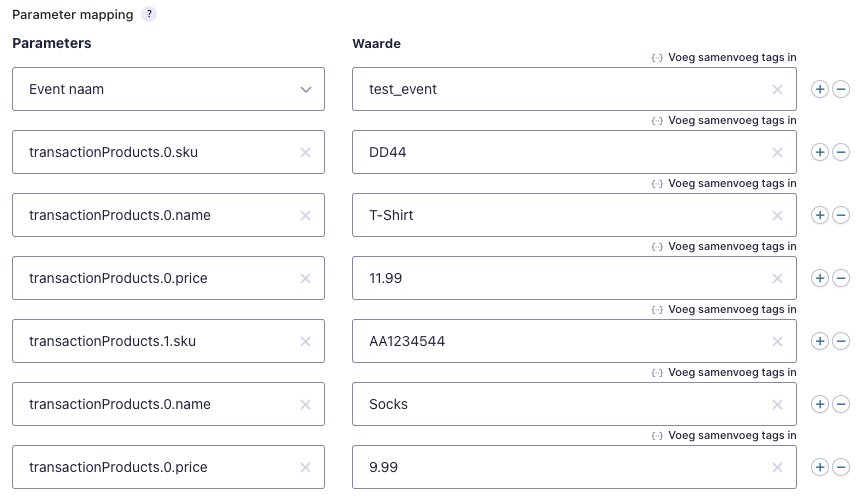
 The provider Facebook gives you the ability to only make Server Side API calls to the Facebook Conversion API. This can be done at any of the six available event moments. Click here to get more information about the Facebook Conversion API.
The provider Facebook gives you the ability to only make Server Side API calls to the Facebook Conversion API. This can be done at any of the six available event moments. Click here to get more information about the Facebook Conversion API.
To use the Facebook provider in Measurements you must have entered a Pixel ID and an Access token in the CampaignSuite settings. Without these two values it is not possible to use this provider. More information about setting up a Pixel can be found at this page.
The Facebook Conversion API works on the basis of events. CampaignSuite will create a JSON based on the mapping made in the Feed action, which will be sent via a POST request to Facebook’s API. See the example below of the mapping in CampaignSuite and the JSON sent to Facebook.
Example of mapping:
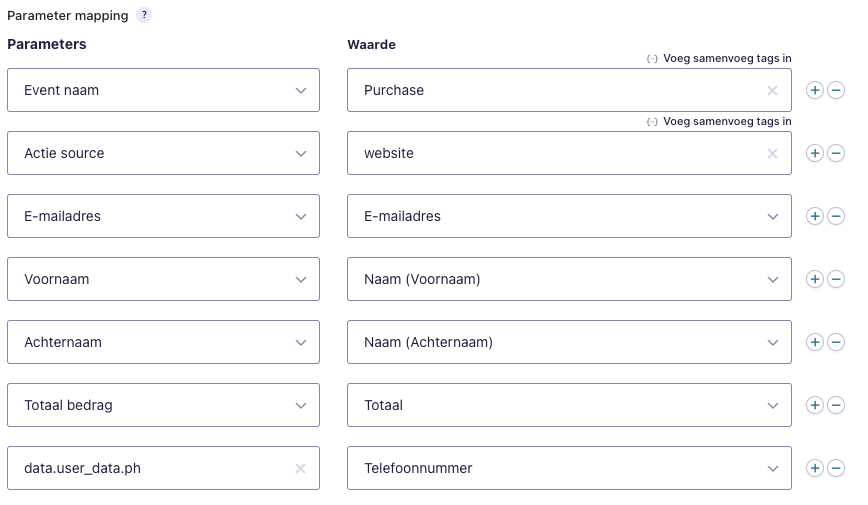
JSON being generated:
{
"data": [
{
"event_name": "Purchase",
"event_time" "1666081911",
"event_id": "1_346",
"event_source_url": "https://www.examplewebsite.nl/doneer",
"action_source": "site",
"user_data": {
"client_ip_address": "1.1.1.1",
"client_user_agent": "Mozilla/5.0 (Macintosh; Intel Mac OS X 10_15_7) AppleWebKit/537.36 (KHTML, like Gecko)",
"em": "309a0a5c3e211326ae75ca18196d301a9bdbd1a882a4d2569511033da23f0abd",
"fn": "254aa248acb47dd654ca3ea53f48c2c26d641d23d7e2e93a1ec56258df7674c4",
"ln": "eeacc9d4cf711ce63f7d247062f52ca2fe4be1a1a8aef231fe23e75e7bdca60c",
"ph": "191d48a770670b9ae8f59dbb16c64c583f92d1922a2a440b26e36bf6e3970bf0"
},
"custom_data": {
"value": 100.2,
"currency": "EUR",
"form_id": "1",
"entry_id": "346"
}
}
]
}- event_id
The event_id parameter is automatically filled with a combination of the form ID and the entry ID (1_346). - action_source
The parameter action_source will be automatically filled with the value website provided it is not mapped with its own value. - event_time
The parameter event_time is filled by default with the date and time of submission in the form. - custom_data.currency
The parameter < strong>custom_data.currency is filled by default with the event type After a successful payment.
Custom parameters
In addition to the predefined parameters, it is also possible to send parameters yourself. Click here for a list of the available parameters for Facebook.
For example, to add a city field to user_data you must enter as key value: data.user_data.ct. This will then automatically in the JSON.
In the example above, the phone number field custom has been added.
Google Analytics 4
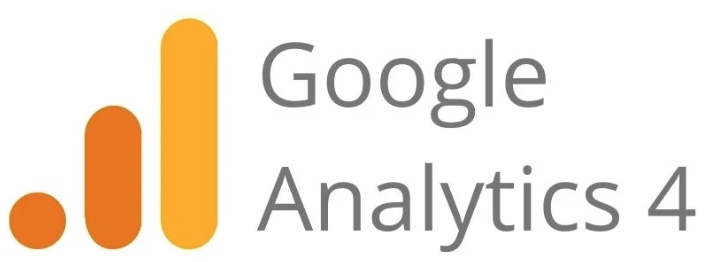 With the provider Google Analytics 4 (GA4) it is possible to perform Client Side and Server Side calls. This is possible for all six different event types. Only with the event types After a webhook call from Findock v2 and After a successful payment a Server Side call can be performed and not Client Side.
With the provider Google Analytics 4 (GA4) it is possible to perform Client Side and Server Side calls. This is possible for all six different event types. Only with the event types After a webhook call from Findock v2 and After a successful payment a Server Side call can be performed and not Client Side.
Client Side
We recommend using the Client Side calls in GA4 if you don’t have Google Tag Manager. When you use the Client Side call, CampaignSuite executes javascript functions by means of gtag(); This requires that Google Tag is installed on the website:
<!-- Google tag (gtag.js) -->
<script async src="https://www.googletagmanager.com/gtag/js?id=GA_TRACKING_ID"></script>
<script>
window.dataLayer = window.dataLayer || [];
function gtag(){window.dataLayer.push(arguments);}
gtag('js', newDate());
gtag('config', 'GA_TRACKING_ID');
</script>In the above code, replace GA_TRACKING_ID with your own tracking ID from Google Analytics.
When CampaignSuite executes a Client Side GA4 call, a javascript code will be executed in the visitor’s browser.
Read here more about the code we use for this. The calls to GA4 use events. An example of a simple page change in Gravity Forms might look like this:
Example of mapping:
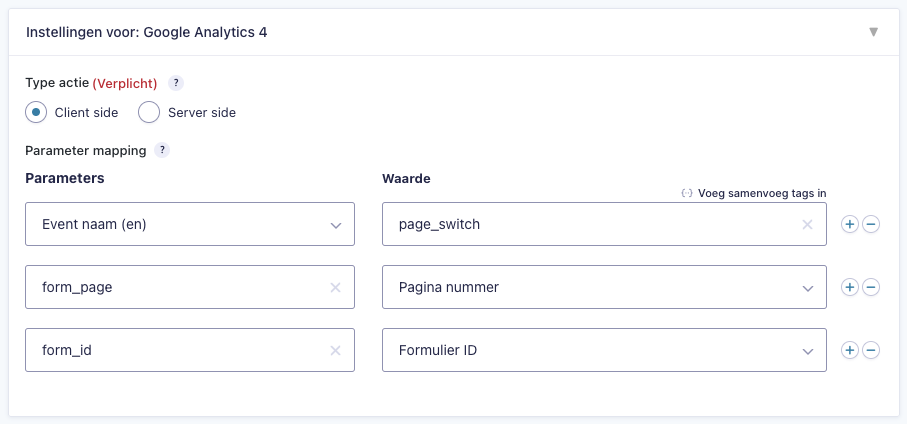
Javascript example
<script type="text/javascript">
if (window.gtag == undefined) {
window.gtag = function() {
window.dataLayer = window.dataLayer || [];
dataLayer.push(arguments);
};
}
gtag('event', 'page_switch', {
'form_page': 1,
'form_id': 4
});
</script>
The above code uses the Javascript function gtag().
Server Side
Technically it is possible to have a Server Side call made to GA4 for all six event types. This is only available if a Measurement ID and an API secret are entered in the CampaignSuite settings. These can be found in the admin section of your Google Analytics account -> Account Settings -> Data Streams. Click on the stream and copy the Measurement ID here. The value of the API secret can be found under the heading Measurement Protocol API secrets.
GA4’s Server Side calls use the Measurement Protocol API from Google. This API also works on the basis of sending events via a POST request to an endpoint (https://www.google-analytics.com/mp/collect).
The images below show an example of a GA4 Server Side call upon a successful payment in CampaignSuite:
Example of mapping:
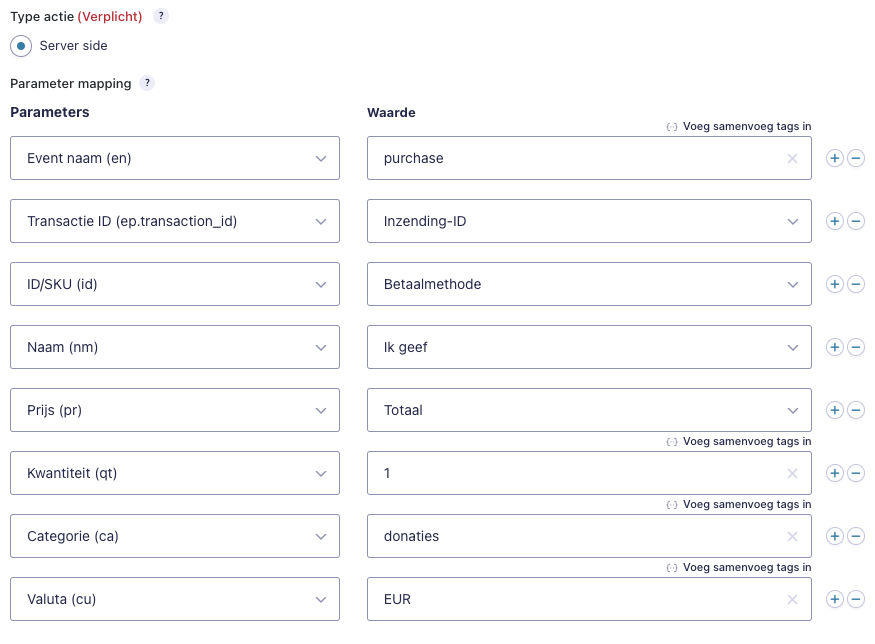
POST request example
{
"client_id": "278327074.1665398324",
"non_personalized_ads": false,
"events": [
{
"name": "purchase",
"params": {
"items":
[
{
"item_id": "Ideal",
"item_name": "One time",
"quantity": 1,
"item_category": "donations",
"price": 25
}
],
"currency": "EUR",
"transaction_id": "346",
"value": 25
}
}
]
}- client_id
This parameter is automatically populated with a Google Analytics Client ID if it is set in the website with a pixel
Event builder
Google has a handy tool with which you can build an event to test whether it is a valid call. It can be found at: https://ga- dev-tools.web.app/ga4/event-builder/
Squeezely
 With Squeezely you can create the most advanced buyer journeys and personalization applications out-of-the-box. You work on the basis of flawless data and can arrange everything entirely according to your own insight. This tool uses both a tracking pixel on your website or can shoot events via their API. CampaignSuite offers this option in Measurements. Squeezely works on the basis of events. Every measure you set in CampaignSuite must be an event.
With Squeezely you can create the most advanced buyer journeys and personalization applications out-of-the-box. You work on the basis of flawless data and can arrange everything entirely according to your own insight. This tool uses both a tracking pixel on your website or can shoot events via their API. CampaignSuite offers this option in Measurements. Squeezely works on the basis of events. Every measure you set in CampaignSuite must be an event.
To use the Server Side calls via the Squeezely provider you must enter an Account ID and an API key in the CampaignSuite settings. Squeezely’s Client Side calls work with a datalayer.push() and will only work if the Squeezely pixel is installed on the website:
<script type="text/javascript">
(function(s,q,z,l,y){s._sqzl=s._sqzl||[];l=q.createElement('script'),
y=q.getElementsByTagName('script')[0];l.async=1;l.type='text/javascript';
l.defer=true;l.src=z;y.parentNode.insertBefore(l,y)})
(window,document,'https://squeezely.tech/tracker/<YOUR_IDENTIFIER>/sqzl.js');
</script>More information on how to use the API can be found on the Squeezely documentation page.
Client Side
The image below shows a simple example of a page switch in a Gravity Forms form:
Example of the mapping:
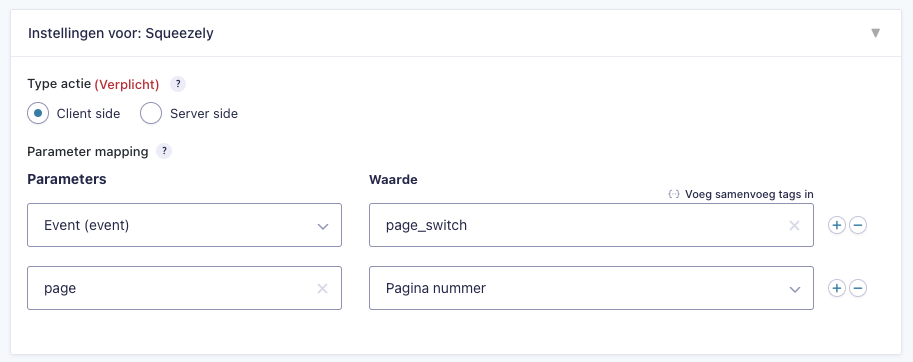
Example of the Javascript code being executed:
<script type="text/javascript">
window._sqzl = window._sqzl || [];
window._sqzl.push({
"event" : "page_switch",
"page" : 1
});
</script>Because the Squeezely pixel is loaded into the website, this event will be captured in Squeezely.
Server Side
Server Side calls can be set in all six measurement moments. However, with Server Side calls it is mandatory to send a unique identifier in the parameters, otherwise Squeezely will not know to whom the data should be linked in their system.
The image below shows a Server Side call after a successful donation. This call is sent ‘underwater’ to Squeezely when a payment is successfully completed.
Example of the mapping:
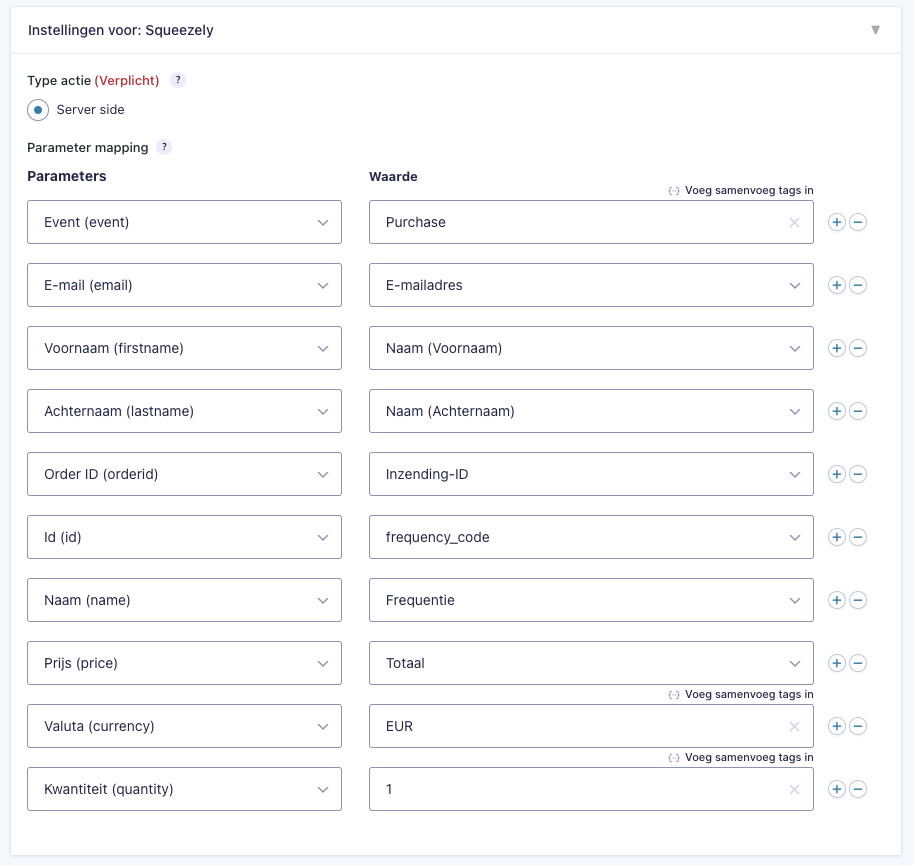
Example of code for API call:
[
"events" => [
[
"event" => "Purchase",
"email" => "test@test.nl",
"firstname" => "Test",
"lastname" => "Test,
"orderid" => 346,
"products" => [
[
"id" => "single",
"name" => "One time",
"price" => 25,
"quantity" => 1
]
]
]
]
];Debugging tool
Squeezely has a tool that allows you to check whether Server Side API calls are coming in properly. It can be found at: https://app.squeezely.tech/data/events.
Google Tag Manager
 Google Tag Manager (GTM) is a tool from Google that allows you as an online marketer, entrepreneur or social media specialist to become less dependent on your developers or an external agency. By means of Google Tag Manager you ensure that you can make useful tags such as Google Analytics or the Meta Pixel work without having to ask your web builder to place the tags in the code of your website.
Google Tag Manager (GTM) is a tool from Google that allows you as an online marketer, entrepreneur or social media specialist to become less dependent on your developers or an external agency. By means of Google Tag Manager you ensure that you can make useful tags such as Google Analytics or the Meta Pixel work without having to ask your web builder to place the tags in the code of your website.
In Measurements you have the option to make Client Side and Server Side calls for GTM. Client Side calls are not available for the events After a webhook call from Findock v2 and After a successful payment. The Client Side calls use the datalayer.push() function. The data can then be read by the GTM pixel on your website:
<!-- Google Tag Manager -->
<script>(function(w,d,s,l,i){w[l]=w[l]||[];w[l].push({' gtm.start':
new Date().getTime(),event:'gtm.js'});var f=d.getElementsByTagName(s)[0],
j=d.createElement(s),dl=l!='dataLayer'?'&l='+l:'';j.async=true;j.src=
'https://www.googletagmanager.com/gtm.js?id='+i+dl;f.parentNode.insertBefore(j,f);
})(window,document,'script','dataLayer','UNIQUE_ID');</script>
<!-- End Google Tag Manager -->In the above code, replace UNIQUE_ID with your own Google Tag Manager ID.
Server Side calls are only available if a value is entered in the CampaignSuite settings for the field GTM SST URL (Google Tag Manager Server Side Tracking URL). This URL (also called Tag Manager server container) can be created in Google Tag Manager. Read here to learn more about how to create a Tag Manager server container. When you fill in the Measurement ID field with the ID from GTM, it will automatically be included in the Server Side calls in the parameter tid.
Client Side
When a Client Side call is made via the Google Tag Manager provider, CampaignSuite automatically detects whether it is an E-commerce Measurement call or not. We do this based on the mapping of the Price parameter of the product. If this parameter is mapped, the datalayer.push() will have an e-commerce syntax. In all other cases it will be a simple version of a datalayer.push(). Below are 2 examples of a simple and an e-commerce Client Side call.
Example of the mapping (simple):
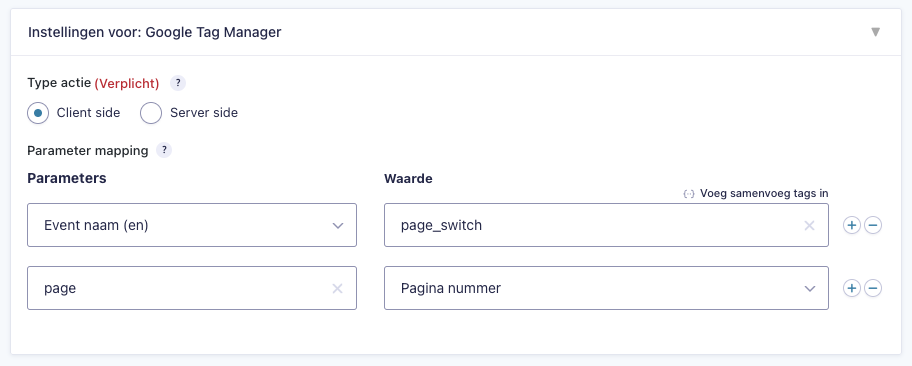
Example of the datalayer.push() Javascript code:
<script type='text/javascript'>
dataLayer.push({
event: "page_switch",
page: "1"
});
</script>Example of the mapping (e-commerce):

Example of the datalayer.push() Javascript code:
<script type='text/javascript'>
dataLayer.push({ ecommerce: null });
dataLayer.push({
event: "purchase",
transaction_id: "349",
e-commerce: {
value: 12.45,
payment_type: "Ideal",
items: [
{
item_id: "1",
item_name: "Donation",
price: 12.45,
quantity: 1
}
]
}
});
</script>Server Side
It is only possible to make Server Side calls if there is a Tag Managa server container has been created and set up. This container can be accessed via a separate URL (for example: https://sst.testwebsite.nl/g/collect) which must be set in the CampaignSuite settings under GTM SST URL.
The parameters mapped in the block of Google Tag Manager at Measurements will be sent in the URL that CampaignSuite calls via a GET request. Check out this page to see which parameters are supported .
The example below shows a Server Side call upon successful payment:
Example of the mapping:
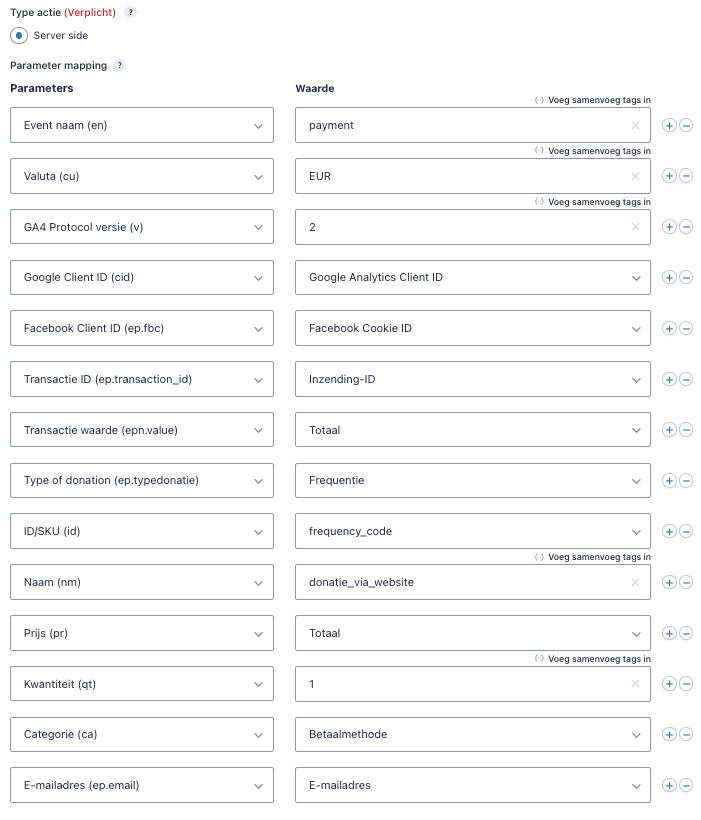
GET request URL being executed:
https://sst.testwebsite.nl/g/collect?v=2&cid=278327074.1665398324&tid=G-AB1CDEFG23& en=payment&cu=EUR&ep.fbc=undefined&ep.transaction_id=346&epn.value=100&ep.typedonatie=One-time&ep.email=test@test.nl&pr1=idonce_0~nmdonatie_via_website~ pr100~qt1~caIdealAll product fields are merged and all individual parameters are pasted after the URL. In this way a Server Side call is made for Google Tag Manager.
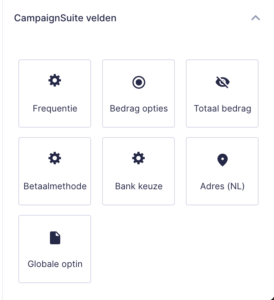 When CampaignSuite is activated, an extra block of fields will appear when editing a form: CampaignSuite fields . These are fields that are made specifically for forms with a payment option. The fields to choose from are:
When CampaignSuite is activated, an extra block of fields will appear when editing a form: CampaignSuite fields . These are fields that are made specifically for forms with a payment option. The fields to choose from are:

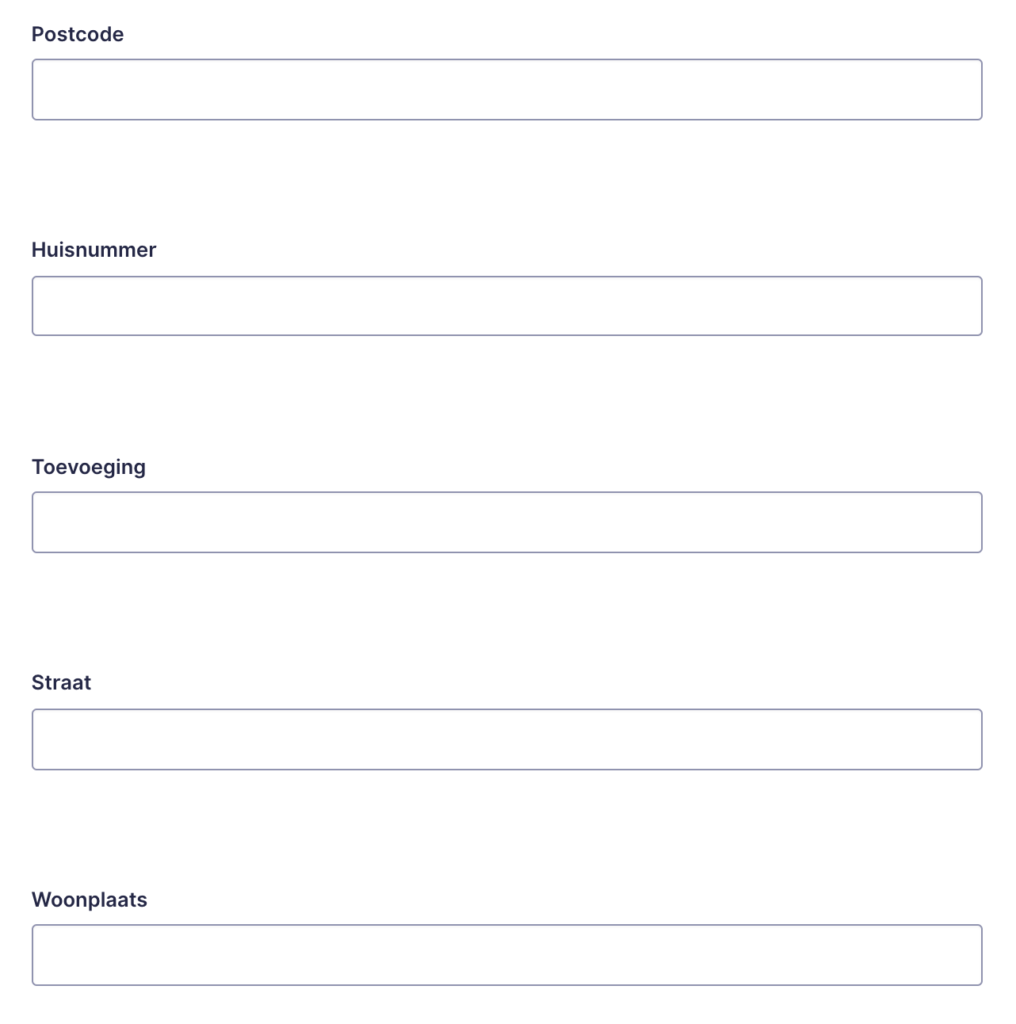

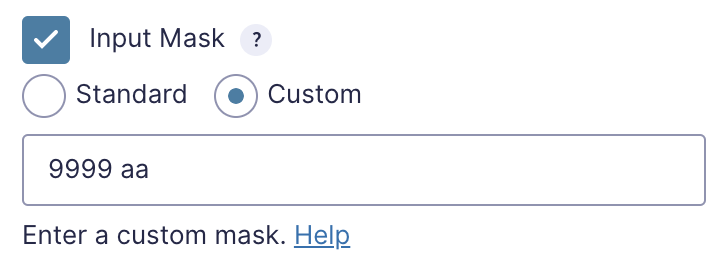

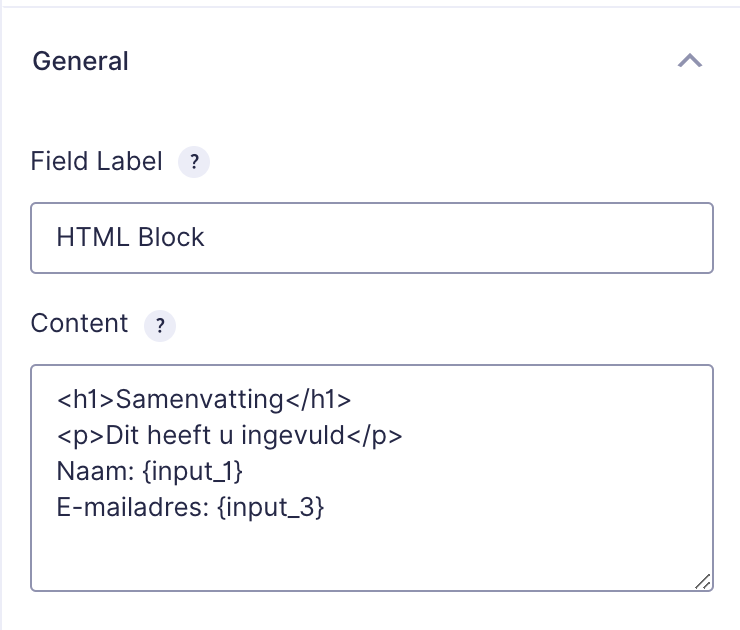
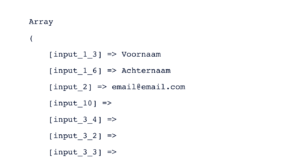
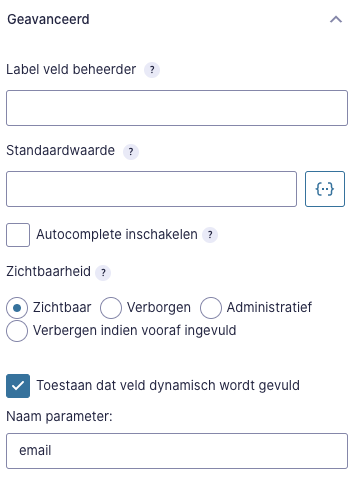

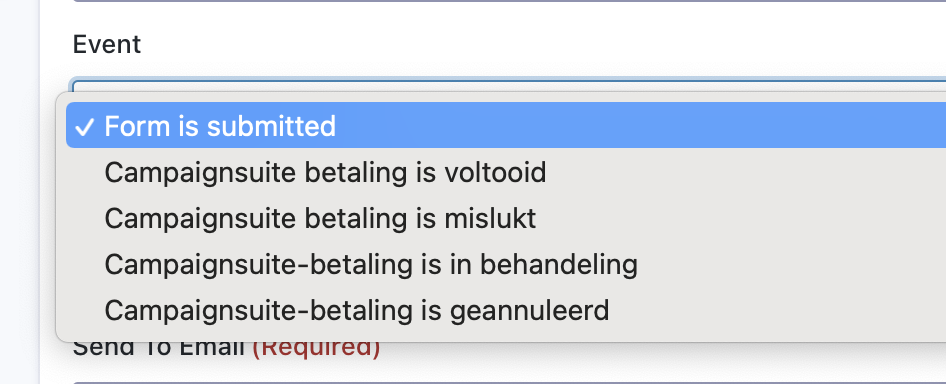
 Once CampaignSuite has set up a connection with Salesforce, a tab named Salesforce will appear with each form under Settings . Here all settings can be made for the connection to Salesforce. Think about:
Once CampaignSuite has set up a connection with Salesforce, a tab named Salesforce will appear with each form under Settings . Here all settings can be made for the connection to Salesforce. Think about:
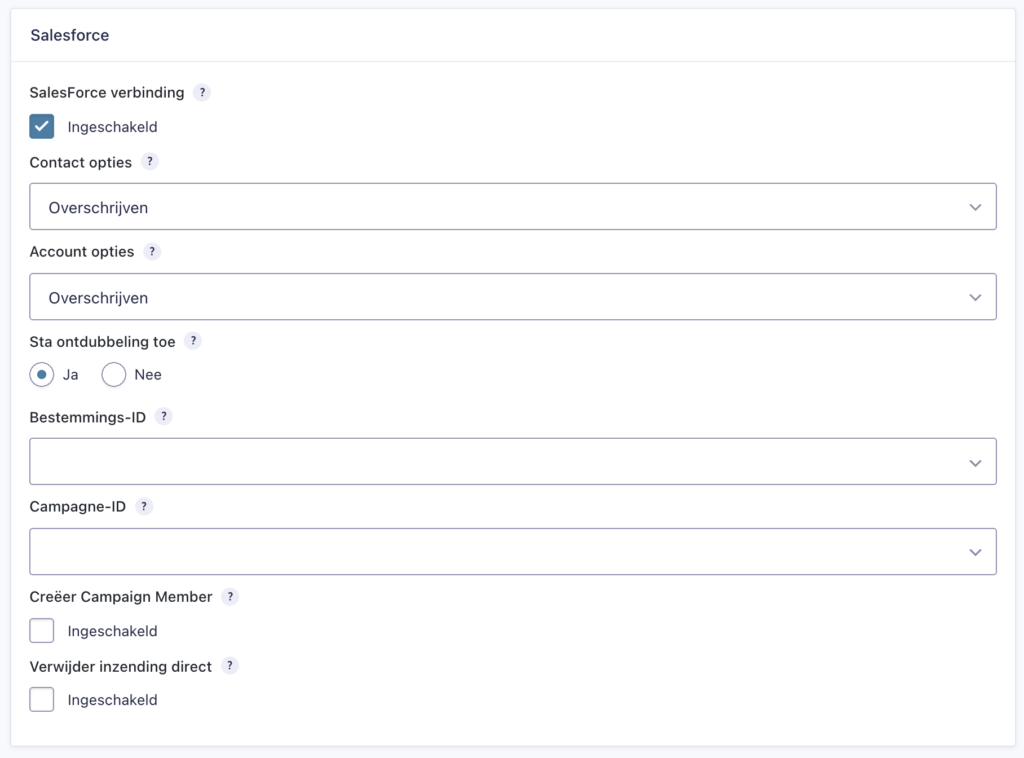


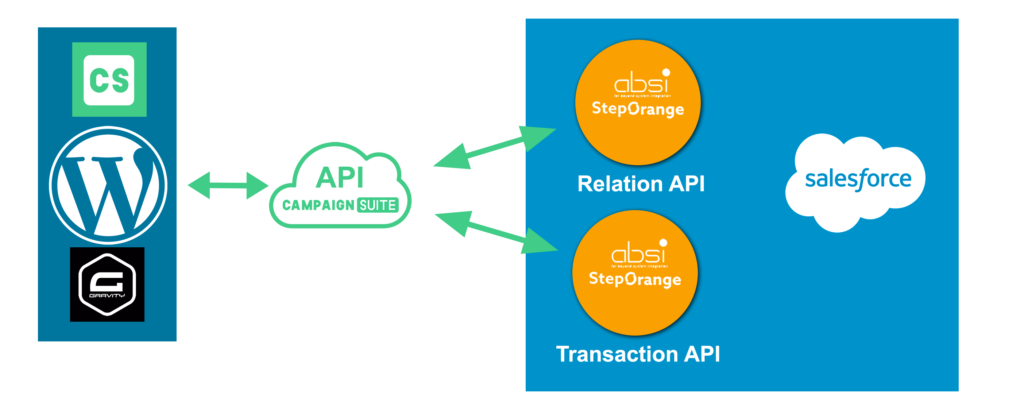


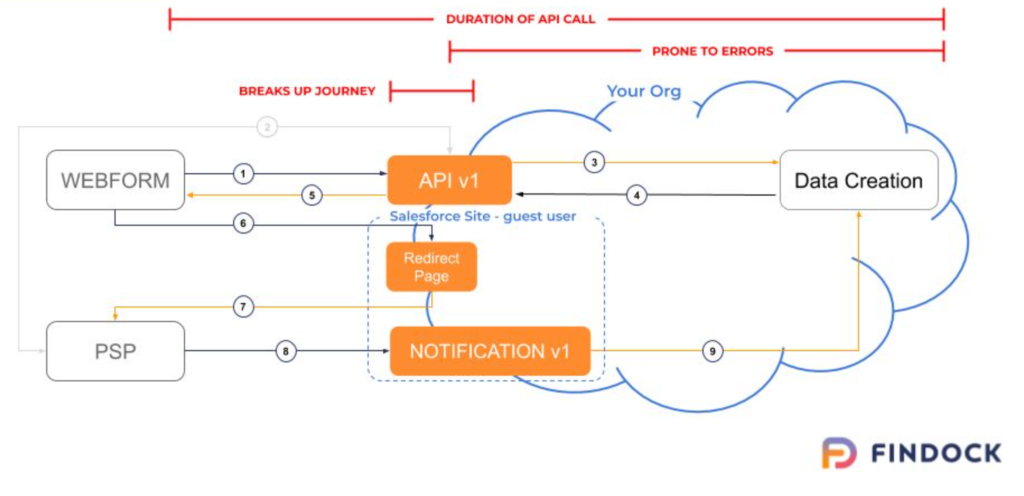
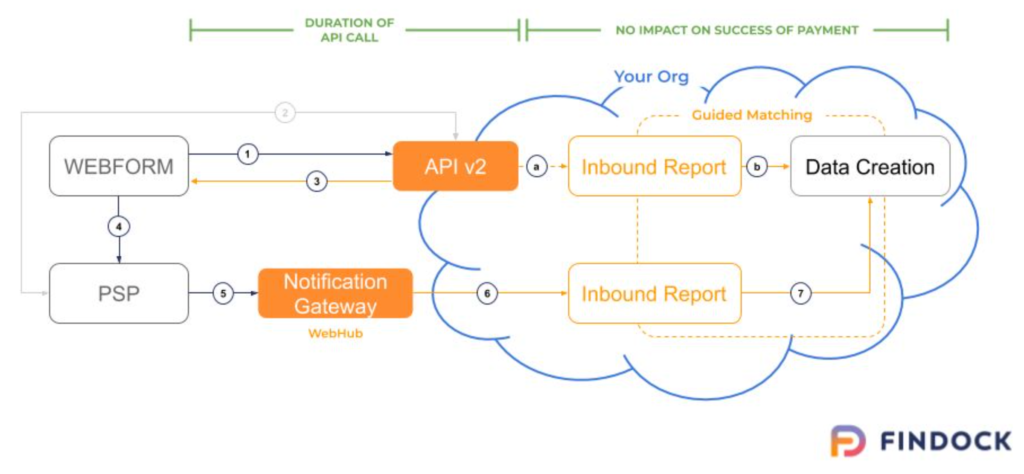
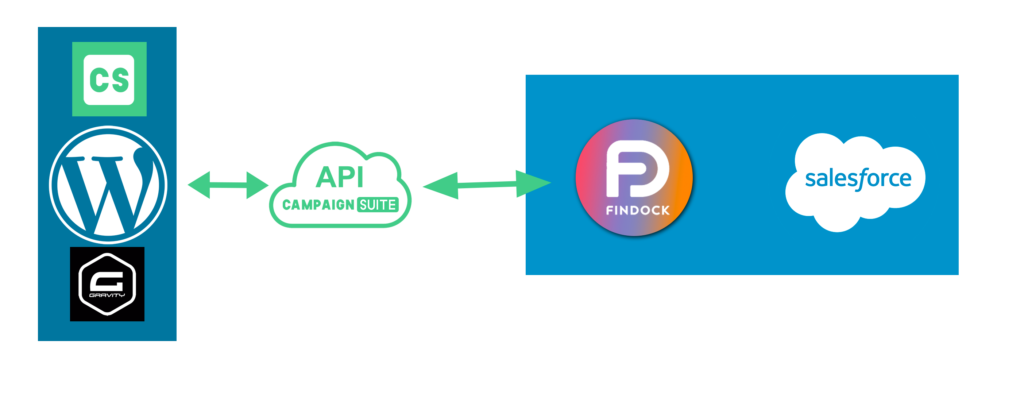
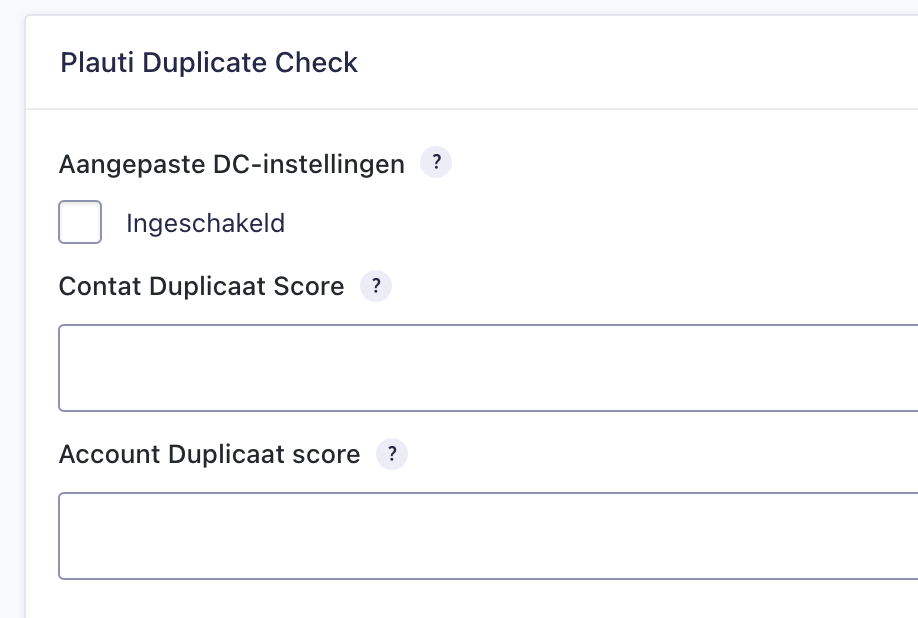

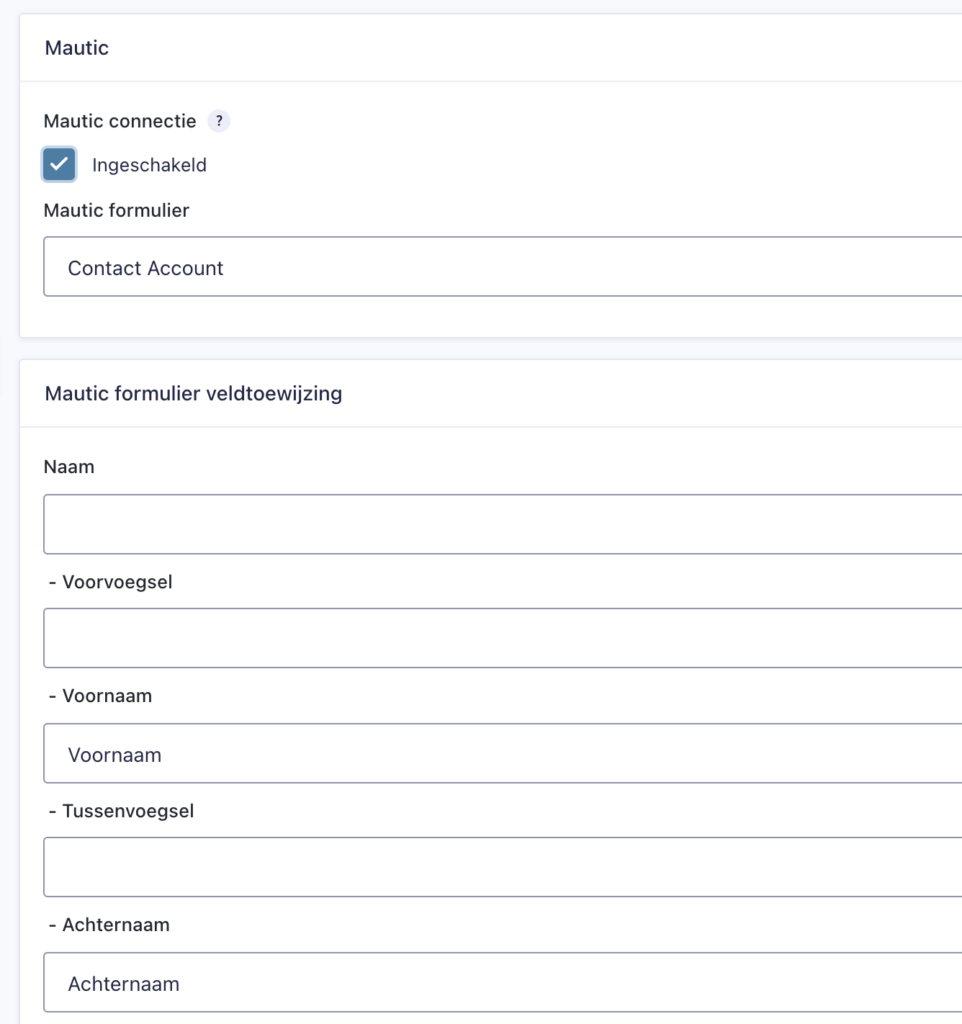

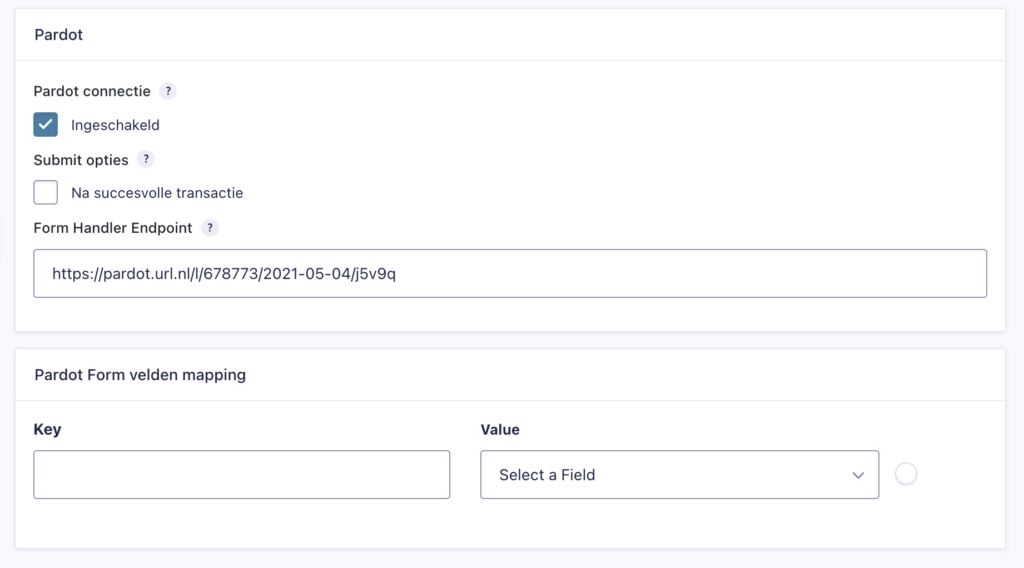
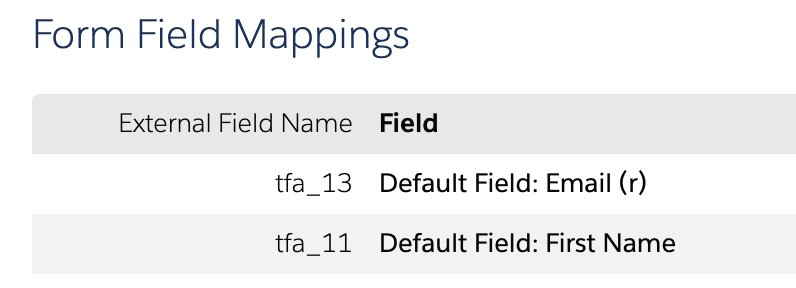
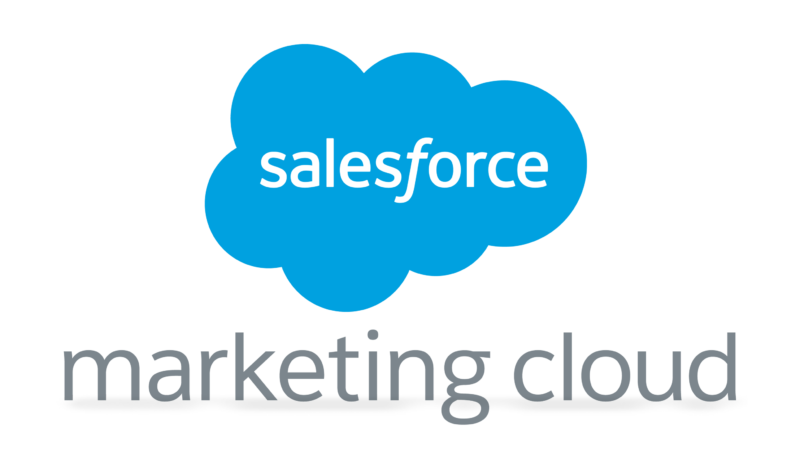 Once a connection has been established with Marketing Cloud, various functions will be displayed in Gravity Forms. Some examples of these features are:
Once a connection has been established with Marketing Cloud, various functions will be displayed in Gravity Forms. Some examples of these features are:
